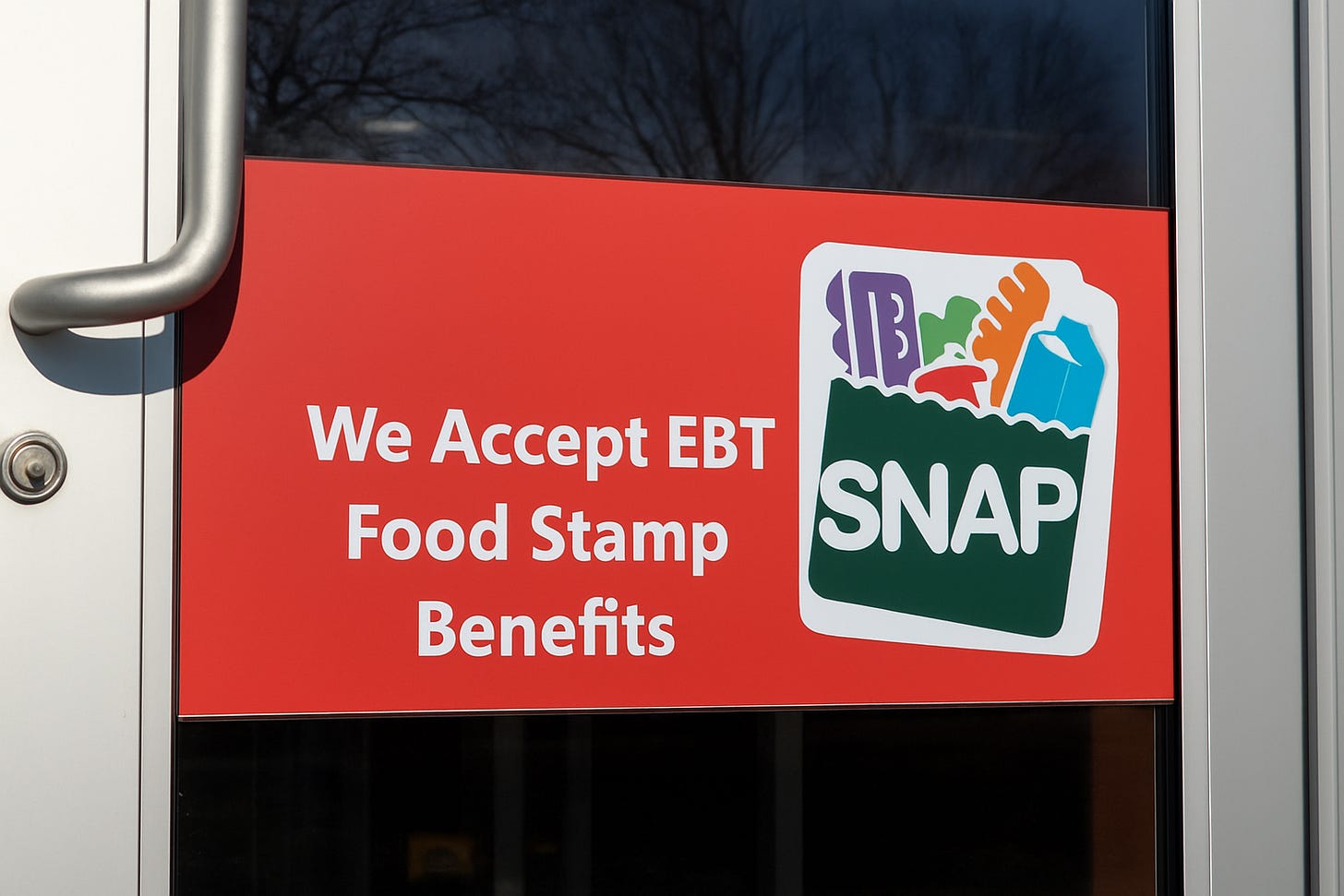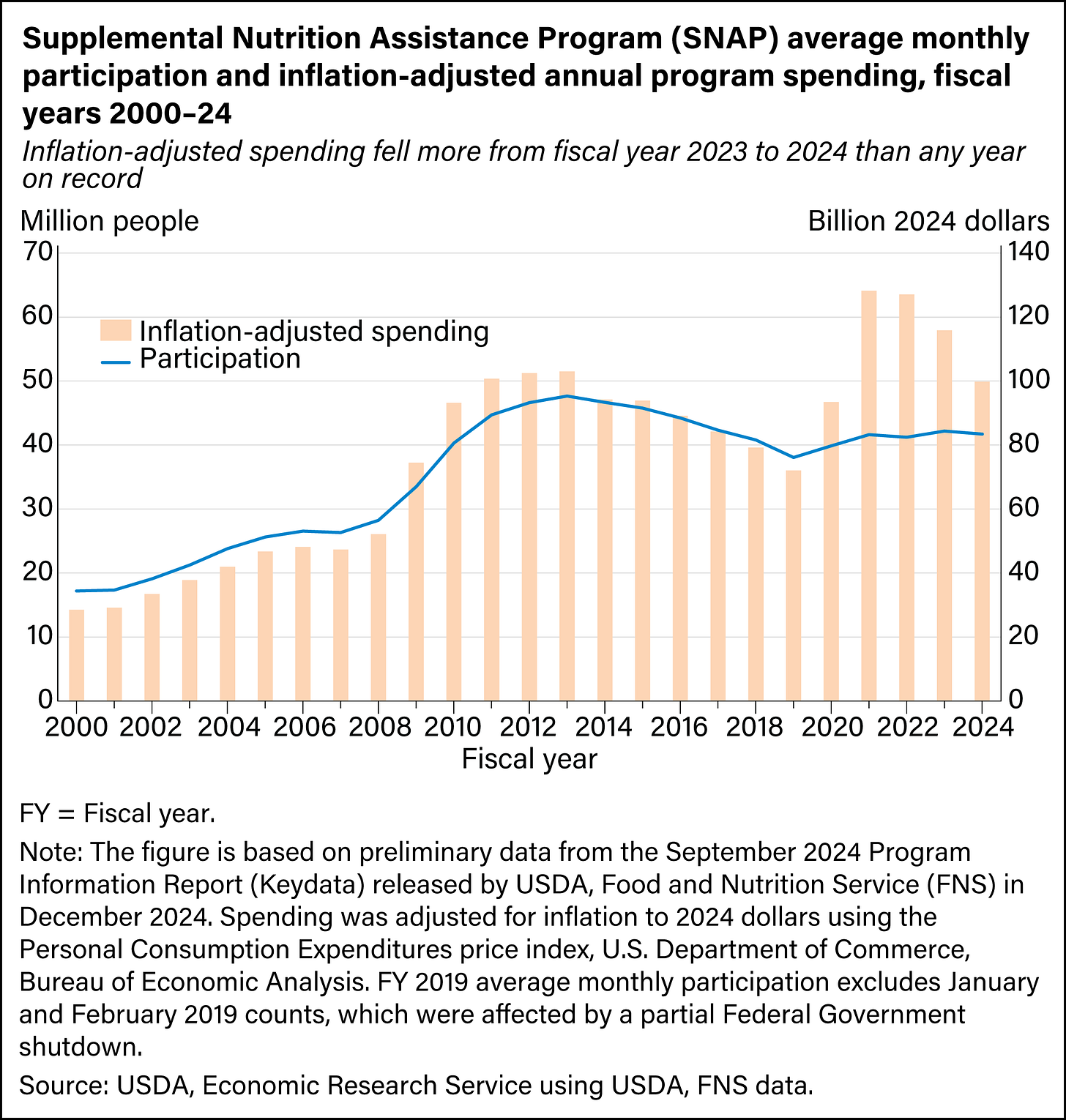Lazy, freeloaders, and basement-dwelling gamers are but a few of the insults being lobbed at SNAP recipients as the government shutdown causes a delay in the November payments. Those statements are ignorant, not factual.
Neither are the statements claiming that immigrants are the largest beneficiaries of SNAP benefits, nor that there was a significant surge in new recipients over the past several years.
As is the case with most programs that genuinely help people, deliberate disinformation is being spread in an attempt to turn the rest of us against it.
Here are the facts:
Most SNAP Recipients Who Can Work, Do Work
Almost 60% of SNAP Recipients are children, and adults aged 60 or older. Only around 40% of beneficiaries are adults aged 18-59, including those with disabilities who are not expected to work to receive benefits.
Taking a single month of recipients as a snapshot, found that over half of the able-bodied adults worked during the month they received benefits. Three-quarters worked within a year of receiving benefits. 87% of households with a child and a non-disabled adult had someone working within a year of receiving benefits.
When examining the program long-term, two-thirds of recipients are transitory, meaning they receive benefits during a period of hardship, such as losing a job, and then stop receiving benefits once they are back on their feet. They work more often than they don’t, and continue working for about half of the months that they receive SNAP benefits. One-third of non-disabled adults receiving benefits for an extended period of time worked every month they received them.
SNAP is used by people who genuinely need it. Telling people to get a job doesn’t change anything. They are people working low-paying jobs with minimal benefits, such as no sick time off. Companies need to pay livable wages and treat their workers with respect.
White U.S.-Born Citizens Are The Biggest Recipients
A disinformation campaign on social media spread the lie claiming that only 18.7% of SNAP recipients were American citizens. The truth is that 89.4% of recipients are US-born citizens. The largest racial group receiving benefits is White, at 35.4%.
The small number of immigrants receiving benefits are citizens or are in the US legally. Undocumented immigrants are ineligible to receive SNAP benefits.
There Was No Surge In Recipients In Recent Years
Another graph was shared on social media showing a large increase in costs for SNAP starting in 2020. Senator Rand Paul retweeted this graph, saying, “This is an alarming trend. We need to ask ourselves why so many Americans are on SNAP.”
The problem is that the graph provided no information about the number of recipients. A member of Congress should know that the USDA releases information, including graphs, that show the number of recipients, such as this one:
We can see that the number of SNAP recipients peaked in 2013, following the Great Recession, and then decreased every year until the pandemic struck. While there was an increase, it was minor. However, costs did rise substantially, which is why a graph that only shows costs is misleading.
Why did costs rise?
The slight increase in recipients did increase costs. Similarly, there was a period of time when many Americans were out of work. SNAP benefits are based on income, so when existing recipients lose their jobs, it causes an increase in benefits, thereby increasing the program's costs.
The unemployment rate returned to pre-pandemic levels in 2022, and inflation returned to normal levels in mid-2023. So why have costs remained elevated? A law passed in 2018 requires the Thrifty Food Plan to be reevaluated every five years to make sure it aligns with current food costs and dietary guidelines.
The TFP is the basis for SNAP benefits. The first evaluation was completed in 2021 and took effect in 2022. It adjusted SNAP benefits upwards by 21%. The benefits were too low for modern times, so they were fixed.
Instead of wasting time being upset that people in need are receiving an average of $187 per person per month for food, be upset at the major corporations such as Amazon and Walmart, which make billions in profits every year while paying their workers so little that they rely on government assistance to survive. Some of the wealthiest companies in the world are receiving corporate welfare because they are not required to pay a proper wage.
We address this by increasing the federal minimum wage to $22.50 over the next five years. This will drastically reduce reliance on federal programs and raise middle-class wages, thereby creating prosperity for the entire nation.
America Needs Livable Wages
The federal minimum wage in 1968 was $1.60. That may not sound like much, but adjusted for inflation, it equals ~$14.50 today. However, the federal minimum wage is currently half that amount, at just $7.25. In 2024, a single adult needed to earn $15 an hour to cover basic living expenses in low-cost areas. The majority of the US requires even higher wag…




